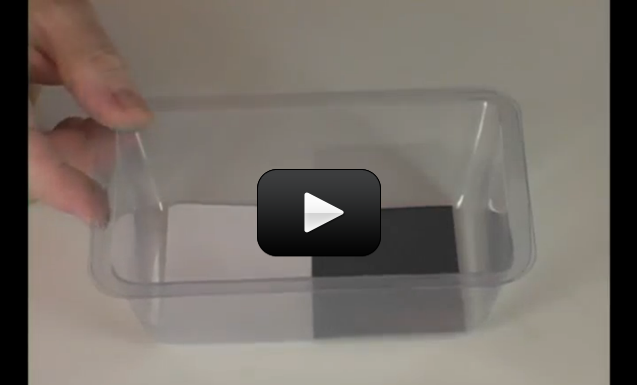Heat is transferred by radiation through electromagnetic waves. Remember, when we talked about waves and energy? Well, heat can be transferred by electromagnetic waves. Energy is vibrating particles that can move by waves over distances right? Well, if those vibrating particles hit something and cause those particles to vibrate (causing them to move faster/increasing their temperature) then heat is being transferred by waves. The type of electromagnetic waves that transfer heat are infra-red waves. The Sun transfers heat to the Earth through radiation.
If you hold your hand near (not touching) an incandescent light bulb until you can feel heat on your hand, you’ll be able to understand how light can travel like a wave. This type of heat transfer is called radiation.
Now don’t panic. This is not a bad kind of radiation like you get from x-rays. It’s infra-red radiation. Heat was transferred from the light bulb to your hand. The energy from the light bulb resonated the molecules in your hand. (Remember resonance?) Since the molecules in your hand are now moving faster, they have increased in temperature. Heat has been transferred! In fact, an incandescent light bulb gives off more energy in heat then it does in light. They are not very energy efficient.
Now, if it’s a hot sunny day outside, are you better off wearing a black or white shirt if you want to stay cool? This experiment will help you figure this out:
Please login or register to read the rest of this content.


If it’s a sunny winter day will it still work? Or does it need to be hotter?
Thank, Matilda!
Are you asking for the experiment match-up sheet between our curriculum and Exploring Physics so you know which experiments to do while working through this curriculum, or are you asking for access to a particular experiment?
Hello. Is there some way that we can get access to the experiments that go along with Exploring Creation with Physical Science 2nd Edition? Thank you for your time!
There are three ways to transfer heat: by conduction (two objects touching), by convection (one of the objects is a fluid like water or air), and radiation (this doesn’t need to be touching like conduction and convection – in fact, the sun’s energy gets to us via radiation).
My guess is that the conditions were such that you had all three going on the most with the ice cube on the driveway, and this combined effect was greater than the reflected energy from the black sheet, which could have been actually insulating the ice cube from the warm concrete.
For the driveway ice cube, the air surrounding the ice cube transferred heat energy, the warm concrete was conduction, and the sun shining on the ice cube was radiation.
Does that help?
Aurora
When I did this experiment, I put one ice cube on the driveway, and two icecubes on top of a white piece of paper. Now, the piece of paper was half on top of the black driveway and half on top of some light colored stone with an icecube on each half. I expected the order of icecubes melting to be this (from first to last) : icecube on driveway, icecube on paper on driveway, icecube on paper on light stone. But instead the order went (from first to last) : icecube on driveway, icecube on paper on light stone, icecube on paper on driveway. Do have any idea why?